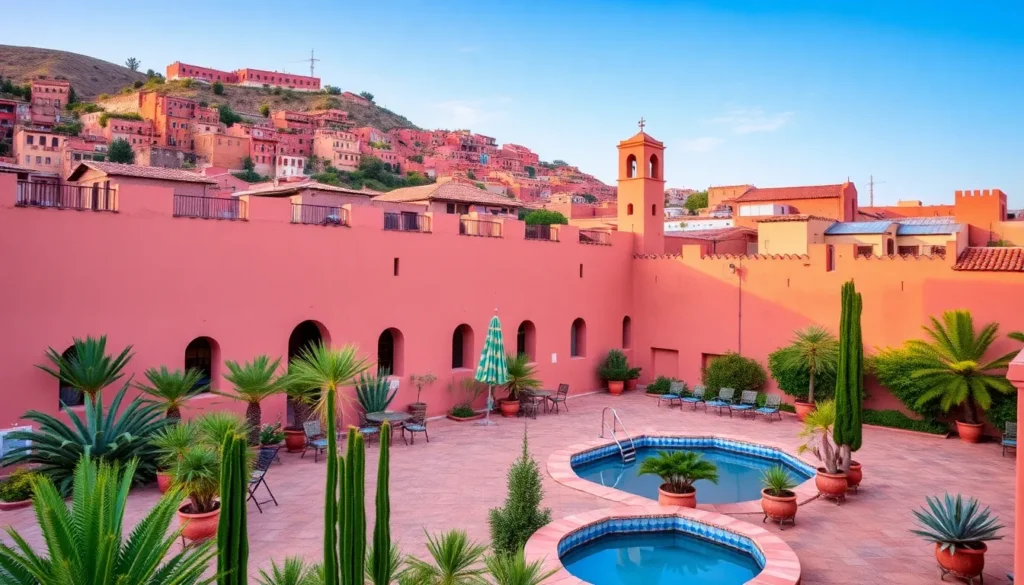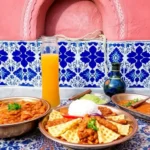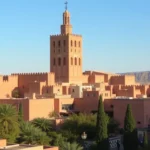20 fascinating facts about Morocco you may not know

Exploring Morocco is like opening a treasure chest filled with rich history, vibrant cultures, and breathtaking landscapes. Just a short flight away, this North African gem offers a myriad of experiences that captivate every traveler. In this article, we will dive deep into some fascinating facts about Morocco that you might not be aware of, enriching your understanding and appreciation of this incredible country.
Interesting facts about Morocco
1. Did you know that Morocco is the most visited African country? Each year, over 10 million tourists flock to this enchanting destination. Factors such as proximity, affordable flights, and stable politics contribute to its appeal. However, the allure of Morocco lies in its diverse attractions, including stargazing in the Sahara, wandering through the bustling bazaars of Marrakech, exploring the ancient medina of Fez, and feeling the refreshing ocean breeze in Essaouira. These are just a few of the cool facts about Morocco that make it a fascinating destination.
2. Morocco recognizes Arabic and Berber languages as its official languages. Additionally, French is widely spoken due to historical ties, along with regional languages such as Riffian and Tamazight. Surprisingly, you will find that many locals speak Spanish fluently, particularly in the coastal areas. This linguistic diversity is one of the many fun facts about Morocco that showcases its rich cultural tapestry.
3. The Moroccan flag features a striking red background with a green five-pointed star at its center. The red symbolizes the lineage of the Prophet Muhammad, while the green star represents knowledge and is associated with Islam, the predominant religion in the country. A fun fact about Morocco is that its flag color symbolism is deeply rooted in the nation’s history.
Cultural norms and traditions in Morocco
4. In Moroccan culture, it is considered impolite to eat with your left hand. This hand is reserved for personal hygiene, and using it for eating or greeting is frowned upon. Make sure to use your right hand for eating and handshakes to show respect. This is just one of the funny facts about Morocco that travelers should keep in mind.
5. Approximately 97% of the Moroccan population practices Islam, with the remaining 3% comprising Jews, Christians, and atheists. Interestingly, pharmacies in Morocco are marked by a green crescent moon instead of the typical green cross, reflecting the Islamic influence on local customs.
6. One of the most common sights you’ll encounter is the use of henna. This natural dye is used for body art and hair coloring. It traditionally symbolizes protection against misfortune and evil spirits. Brides often adorn their hands and feet with intricate henna designs, representing geometric shapes and verses from the Quran. These cultural practices are among the fun facts of Morocco that highlight its unique traditions.
7. Tea is a symbol of hospitality in Morocco. You will find yourself offered tea repeatedly during your visit, which is a delightful tradition! Morocco is also the world's leading importer of green tea. The locals affectionately refer to mint tea as Berber whisky, as alcohol consumption is minimal in the culture. The significance of tea is one of the many fun facts about Morocco that visitors enjoy experiencing first-hand.
Historical figures and landmarks
8. One of Morocco's most renowned historical figures is Ibn Battuta, often dubbed the Muslim Marco Polo. He traveled for thirty years, chronicling his adventures across Asia, Europe, and the Middle East. His journeys provide a fascinating glimpse into the world of the 14th century, making him a key figure in the interesting facts about Morocco's heritage.
9. The legendary Sultan Alaoui Moulay Ismail Ben Cherif, who ruled from 1672 to 1727, is said to have fathered over 1,000 children. His extensive harem included hundreds of wives and concubines, illustrating the grandeur and complexity of royal life in Morocco during that era.
10. Contrary to popular belief, Morocco is not solely a land of desert and dunes. In fact, you can find snow-capped mountains here, particularly in the Atlas region. The Mount Toubkal stands tall at 4,167 meters, making it the highest peak in North Africa—ideal for skiing and trekking enthusiasts. This geographical diversity is one of the cool facts about Morocco that many find surprising.
Geological wonders and natural beauty
11. You might be surprised to discover that fossils are quite common in the Sahara Desert. This region was once covered by a vast ocean millions of years ago. In Erfoud, you can visit small museums and even buy beautifully preserved marine fossils from local vendors. These natural wonders are among the fun facts of Morocco that showcase its rich geological history.
12. The Hassan II Mosque in Casablanca boasts a minaret that was the tallest religious structure in the world until recently. Its stunning architectural design draws visitors from all over, showcasing the unique blend of modernity and tradition found in Moroccan religious sites.
Unique towns and architectural marvels
13. Located at an elevation of 1,700 meters in the Middle Atlas Mountains, Ifrane resembles a Swiss village. Built by the French in the early 20th century as a summer retreat, this charming town features sloped roofs, manicured parks, and is famous for its symbol—a lion statue carved from stone. This picturesque setting is one of the cool facts about Morocco that attracts many visitors.
14. Chefchaouen, or Chaouen, is known for its captivating blue houses. This picturesque town is often seen in photographs and documentaries. The blue color, believed to repel mosquitoes, adds to its allure. Interestingly, "Chaouen" means "peaks," as it is nestled at the base of the Rif Mountains—a fun fact about Morocco that many travelers appreciate.
15. In Fez, you can find the University of Al Qarawiyyin, recognized as one of the oldest continuously operating universities in the world. Founded in 859 by two Tunisian women, this institution has played a significant role in the spread of education in the Muslim world. Its historical significance is one of the interesting facts about Morocco that highlight its scholarly contributions.
Delicious Moroccan cuisine
16. One of Morocco's most famous dishes is pastilla, a savory pie traditionally made with pigeon or chicken, layered with spices, and topped with powdered sugar and cinnamon. This delightful combination of sweet and savory flavors is a must-try during your visit, making it one of the fun facts about Morocco that every foodie should know.
17. The term couscous originates from the Berber word "keskesu," meaning "rounded." This staple dish made from steamed semolina grains is not only delicious but also a significant part of Moroccan culture and hospitality. Learning about such culinary traditions adds to the fun facts of Morocco that enrich your travel experience.
Historical military significance
18. Established in 1088, the Royal Guard is one of the oldest military bodies in Morocco, tasked with protecting the royal family. Its historical significance was further highlighted during the Spanish Civil War when Franco established the Moroccan Guard as an elite military force.
Exploring Morocco's kasbahs and filming locations
19. A road trip through Morocco offers a glimpse into the country's stunning kasbahs, traditional earthen fortresses used by Berbers to safeguard trade routes. Some of the most beautiful kasbahs include Kasbah Telouet, Kasbah de Taourirt, and Kasbah de Amridil. Remember, these should not be confused with ksars, which are fortified villages. These architectural wonders are among the cool facts about Morocco that every traveler should explore.
20. If you're a fan of Game of Thrones, you'll be pleased to know that many filming locations can be found in Morocco. Notably, the Ait Ben Haddou ksar served as the backdrop for scenes depicting Yunkai and Pentos, two cities in the Slave Bay. This connection to pop culture is one of the fun facts about Morocco that many fans enjoy discovering.
Have you come across any other intriguing facts about Morocco? Share your experiences and discoveries from your travels, as there’s always something new to learn!
Keep up with daily updates from Morocco on our Instagram stories.
| Save on your trip |
| Get cheap flights to Morocco here |
| Find accommodation at the best prices here |
| Book activities in Spanish in Morocco here |
| 5% discount on your travel insurance with IATI here |
| Reserve airport transfers here |
| Learn how to withdraw money without fees here |
| Get a 5% discount on your eSIM from Holafly here |
| Rent a car with the best deals here |
| The best books and travel guides here |
| All our articles about Morocco |






Deja una respuesta